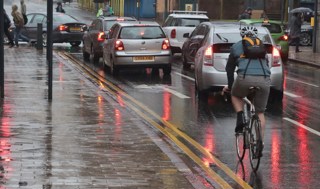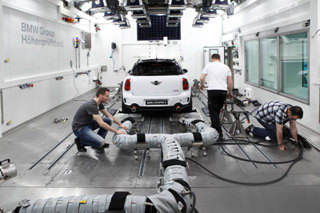The European Commission has published its proposal for the new Euro 7 emissions standard, which will apply to all vehicle types and powertrains.
The proposal replaces and simplifies previously separate emission rules for cars and vans (Euro 6) and lorries and buses (Euro VI).
The Euro 7 standard brings emission limits for all motor vehicles under a single set of rules. The new rules are fuel- and technology-neutral, placing the same limits regardless of whether the vehicle uses petrol, diesel, electric drive-trains or alternative fuels.
Margrethe Vestager, executive vice-president for a Europe Fit for the Digital Age, said: “The new rules will help us breathe safer air and help the sector to become greener and more resilient. We need to stick to the objective of the European Green Deal and become a standard setter globally.”
Nitrous-oxide (NOx) emissions for petrol engines will remain the same, according to Euro 7 proposals, allowing them to emit up to 60mg/km. Diesel engines will also be restricted to that level. Current Euro 6 rules allow diesels to emit up to 80mg/km of NOx. Limits will also be tightened for lorries and buses, while there will also be limits for previously unregulated pollutants, such as NOx emissions from heavy-duty vehicles.
Compliance for cars and vans will be checked until these vehicles reach 125,000 miles and 10 years of age. This doubles the durability requirements existing under Euro 6/VI rules. Similar increases will take place for buses and lorries.
The new rules will regulate the durability of batteries installed in electrified cars and vans in order to increase confidence in electric vehicles. This will also reduce the need for replacing batteries early in the life of a vehicle.
The proposed rules also set limits for particulate emissions from brakes and tyres that will also apply to electric vehicles.
By 2035, Euro 7 is expected to have lowered total NOx emissions from cars and vans by 35% compared to Euro 6, and by 56% compared to Euro VI from buses and lorries. At the same time, particles from the tailpipe will be 13% lower from cars and vans, and 39% from buses and lorries, while particles from the brakes of a car will be down 27%.
The rules on pollutant emissions are complementary to the rules on CO2 emissions. The agreed target for 100% CO2 reduction by 2035 for cars and vans has been taken into account in the proposal. The Commission will review in the coming months the CO2 standards for lorries and buses.
According to the Commission's proposal, the regulation is scheduled to come into force on July 1, 2025, for new light-duty vehicles and July 1, 2027, for new heavy-duty vehicles.
Limited exceptions will apply to vehicles constructed by small volume manufacturers to take care of specific technology constraints.
Carmakers have previously lobbied hard against the new Euro 7 rules, which were leaked last week, arguing they will face significant costs that could hamper investment in the development of electric vehicles.
Stellantis CEO Carlos Tavares, previously said: "From an industry perspective, we don't need Euro 7, as it will be drawing resources we should be spending on electrification. Why use scarce resources for something for a short period of time? The industry doesn't need it, and it's counterproductive."
The Commission's proposal will be submitted to the European Parliament and the Council in view of its adoption by the co-legislators.





















Login to comment
Comments
No comments have been made yet.